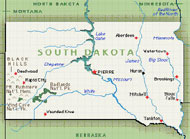| 1.0 | TRAVEL AND TRAFFIC MANAGEMENT |
| 1.5.2 | TSI shall include an Information Access function that allows travelers to access the available information. |
| 1.5.2.5 | Information Access shall provide the capability for travelers to access the TSI information via any of, but not limited to, the following methods: |
| 1.5.2.5(a) | Highway advisory radio. |
| 1.6 | TRAFFIC CONTROL |
| 1.6.0 | ITS shall include a Traffic Control (TC) function. Traffic Control provides the capability to efficiently manage the movement of traffic on streets and highways. Four functions are provided, which are, (1) Traffic Flow Optimization, (2) Traffic Surveillance, (3) Control, and (4) Provide Information. This will also include control of network signal systems with eventual integration of freeway control. |
| 1.6.3 | TC shall include a Device Control function. |
| 1.6.3.3 | The Device Control function shall provide the capability to exercise control over those devices utilized for traffic control. |
| 1.6.3.3.1 | Device Control shall include the capability to control traffic signalization, including rapid modification of signalization parameters to respond to traffic requirements. |
| 1.6.3.3.2 | Device Control shall include the capability to dynamically control traffic signing. |
| 1.6.3.3.4 | Device Control shall include the capability to exercise dynamic control over the infrastructure (such as reversible-lanes, turning restrictions, etc.). |
| 1.6.3.4 | Device Control shall communicate control data to the following devices. |
| 1.6.3.4(a) | Traffic signals. |
| 1.8 | TRAVEL DEMAND MANAGEMENT |
| 1.8.0 | ITS shall include a Travel Demand Management (TDM) function. Travel Demand Management will generate and communicate management and control strategies that will support and facilitate the implementation of TDM programs, policies and regulations. It consists of two major functions, which are, (1) Increase Efficiency of Transportation System and (2) Provide Wide Variety of Mobility Options. |
| 1.8.2 | TDM shall include a processing function. |
| 1.8.2.8 | The processing function's generation of management and control strategies for HOV facilities shall include as factors, but not be limited to, the following: |
| 1.8.2.8(a) | Auto occupancy requirements. |
| 1.8.2.8(b) | Priority for selected vehicle types at ramps. |
| 1.8.2.8(c) | Priority for selected vehicle types at signalized intersections. |
| 1.8.3 | TDM shall include a sensors/control function. |
| 1.8.3.1 | The sensors/control function shall provide the capability to gather information needed for the generation of management and control strategies to include, but not be limited to the, following: |
| 1.8.3.1(c) | Vehicle occupancy. |
| 1.10 | HIGHWAY RAIL INTERSECTION |
| 1.10.3 | At all HRIs with active railroad warning systems, HRI shall manage the traffic in the intersection. |
| 1.10.3.1 | HRI shall be capable of augmenting the intersection with standard highway traffic signal devices. |
| 1.10.3.3 | HRI shall provide an Intelligent Intersection Controller (IIC) function to manage highway and rail traffic in the intersection. |
| 1.10.3.3.2 | IIC function shall control active railway warning devices, including flashing lights and physical barriers for highway and walkway lanes at HRIs. |
| 1.10.3.3.3 | IIC function shall provide an intersection surveillance system to derive the real-time status of traffic in the intersection. |
| 1.10.4 | HRI shall include a Standard Speed Rail (SSR) Subservice to manage highway and rail traffic at HRIs for rail lines with operational speeds less than 80 MPH. |
| 1.10.4.1 | SSR shall include active railroad warning systems at designated HRIs. |
| 1.10.4.2 | SSR shall include passive HRIs with non-active warning systems. |
| 1.10.4.2.1 | SSR shall augment passive warning signs with additional highway traffic control devices at passive HRIs. |
| 1.10.5 | HRI shall provide a High Speed Rail (HSR) Subservice for HRIs on rail lines with operational speeds between 80 and 125 MPH. |
| 1.10.5.1 | HSR shall include active roadside message devices to provide highway closure information at HSR HRIs. |
| 1.10.5.2 | HSR shall provide special safety features to enhance safety. |
| 1.10.5.2.2 | HSR shall include a positive barrier function (e.g. four quadrant gates) to close the intersection to highway traffic for rail lines operating at speeds over 110 MPH. |
| 5.0 | EMERGENCY MANAGEMENT |
| 5.2 | EMERGENCY VEHICLE MANAGEMENT |
| 5.2.3 | EVM Service shall include a Signal Priority System. |
| 8.0 | MAINTENANCE AND CONSTRUCTION MANAGEMENT |
| 8.1 | MAINTENANCE AND CONSTRUCTION OPERATIONS |
| 8.1.2 | Maintenance and Construction Operations shall provide a Roadway Management (RWM) function to monitor traffic, road surface, and environmental conditions and forecast traffic and road surface conditions to support management of routine and hazardous road condition remediation and to communicate changes in conditions. This function includes interactions among Traffic Managers, Supervisors, Dispatchers, Field Crews, Construction Crews, Asset Managers, Planning Agencies, and Weather Services Organizations. |
| 8.1.2.1 | RWM shall support a number of different services, including but not limited to: |
| 8.1.2.1(e) | Repair activities |
| | |












